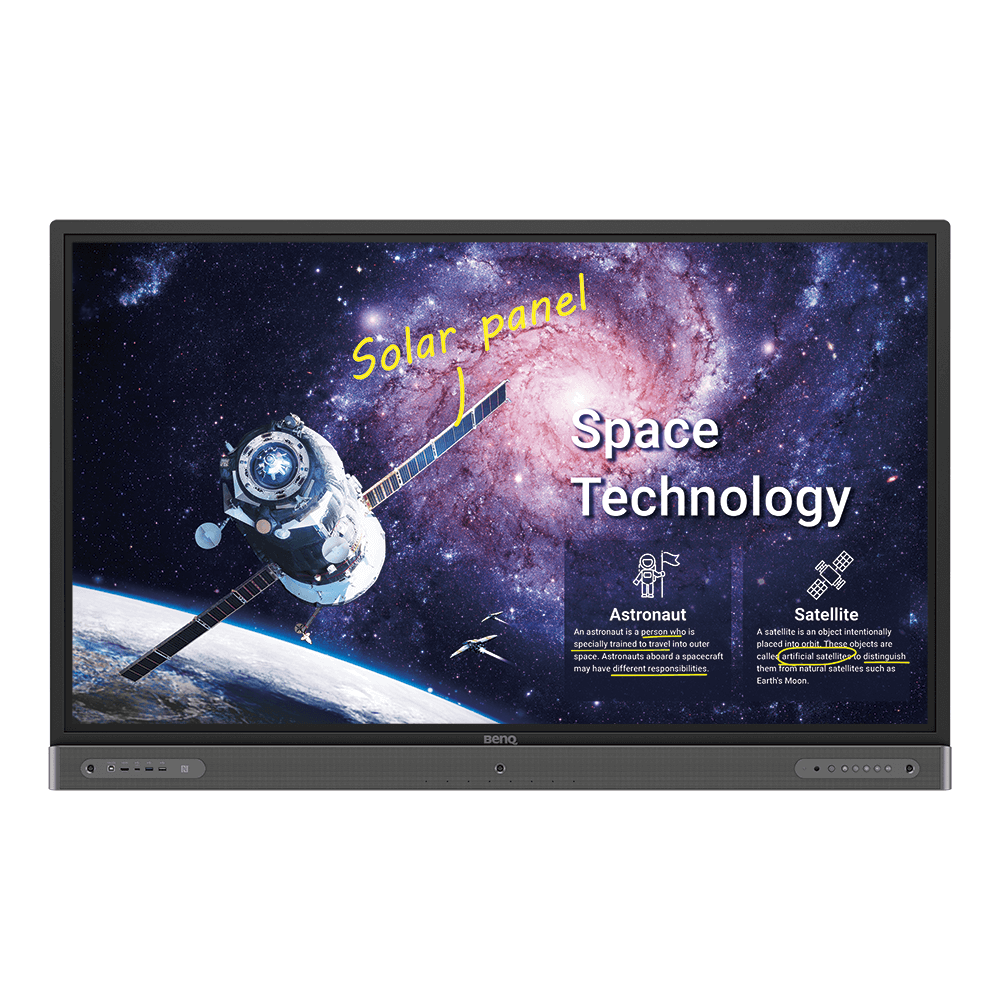How Can Good EdTech in Classrooms Help K12 Teachers?
- BenQ
- 2020-12-15
With existing, emerging, and upcoming trends taken into consideration, the imperative to incorporate and become adept at more advanced classroom technology stands as obvious. However, teachers and administrators around the world worry about several factors related to the adoption of educational technology. Key obstacles include concerns about initial costs and thus return on investment. Maintenance and steep learning curves also rank as chief worries. Teachers with established methods of educating students worry new tools mean prolonged training, lost productivity, and added stress.
While school districts may worry about costs primarily, those fears are largely unfounded due to the affordable and long-lasting nature of new ed tech. However, for teachers ease of integration and learning to use new technology are the primary concerns.
Misgivings about learning curves and IT-related snags proliferate so much among the educational community, it seems teacher development rates as the leading hurdle to introducing more sophisticated educational technology. Only 10% of teachers feel confident about infusing new educational technology into their classrooms. With only one in ten having the confidence to do so, improving ed tech in classrooms is obviously a challenge.
Prepare teachers for the future
Every profession and professional run the risk of becoming complacent and overly “set in their ways”. Teachers that have a certain approach may show reluctance to change and adapt to new circumstances. However, learning new skills, mastering new technology, and maintaining an open mindset all serve to help educators. This is especially true if teachers choose to change schools or wish to gain promotions within school districts. Adapting to new educational technology and gaining proficiencies help teachers stay competitive and on top of trends in education and technology, which surely merits spending some time and effort on acquiring new tech skills.
This calls for unpacking the main concerns teachers have about new technology. For example, educators often lament the time they waste on setting up and making sure existing technology works within educational settings. Troubleshooting tech is widely seen as a drain on time and patience, and new tech means fears of more troubleshooting.
With COVID-19 and distance learning, teachers report spending far more time on tech problem solving than was the case when in-person classes were the norm. Repetitive, time-consuming technology-related tasks take away precious intellectual and motivational resources from teachers and students. Or at least that’s the perception. Problem is, most of the technology that creates this stereotype wasn’t custom-developed for classrooms and has a more general audience approach. Teachers complain about video conferencing software troubles, but most of this software wasn’t optimized for education.
Good educational technology reduces the need for troubleshooting annoyances. Such tools are easy to use, become familiar with, and deploy towards reducing teacher stress and workloads. One clear example is grading and correcting exams, a process that thanks to new educational technology can become far more automated and streamlined. That leaves teachers with more time to focus on creative and less menial challenges.
Educators must have confidence in themselves and their ability to adapt. After all, those working in K-12 bear a big responsibility to shape future generations. That takes no small amount of courage and vision, and teachers should remember that they’re part of a very adaptable profession that in many ways has been at the forefront of technological change. That only 10% of teachers feel confident about adding new technology to classrooms and teaching new tech skills to students is not acceptable in this day and age. Whether on the personal or organizational level, teachers must have more confidence in the adaptability of teaching and the value of new educational technology.
Naturally, a lot of this has to do with personal motivation. When educators realize the clear benefits of new technology, motivation soon follows as the incentives are apparent. While every district, school, and teacher may have their own paths to motivation, communicating the numerous benefits of each new educational technology in straightforward terms works wonders to diminish apprehension.
Educators Must Keep Up with Tech-Savvy Students
Whereas teachers often feel intimidated by new technology, today’s students and obviously those of the future all share one thing. They’re born into technology and know little of the old world of boards, markers, chalk, and endless printouts. For these generations of students, new educational technology offers a much more viable path to generating engagement and enthusiasm about classroom activities. And that applies to in-person teaching and remote learning.
To wit, contemporary students prefer online chat and messaging to physical office hours, and email plays a pivotal role in contacting educators for help or assistance, as many teachers have been finding out over recent years. Teachers need to employ new educational technology to impart knowledge, not just information. With that goal in sight, motivation should flow naturally. Teachers are in the business of knowledge, and technology makes more knowledge widely available to a bigger audience of students. Those are all pluses.
While simply pushing out information sounds easy, it’s not the purpose of adopting new tools. Mastering those tools to deliver profound knowledge and engage students is the purpose, and so these changes we’re witnessing call on educators to take technology into the core of their professional being Similarly, savvy teachers spot tech fatigue coming ahead of time. If students or educators need to unplug, take a break, or switch to a more “human contact” approach, teachers that have mastered new tech will know. By the same token, realistic expectations must remain. New ed tech doesn’t guarantee some kind of magic elixir to boost everyone’s grades overnight or overcome all barriers to learning. It doesn’t offer a stand-in for the actual work of teaching, but rather an augment to make that work better and more efficient.
Be Ready for Remote and Hybrid Learning
Even before 2020, cloud services such as storage, online collaborative tools, and video conferencing were becoming mainstream in K-12 education, leading to emergence of hybrid learning. The COVID-19 situation simply accelerated this trend, transforming many traditional learning environments into hybrid classrooms. Here we have an opportunity to get a good thing from a bad situation. All of these technologies carry many benefits for teachers, students, parents, and organizations such as school districts. Thanks to virtual participation, teachers find inviting experts into classes much easier than before. Guest speakers don’t need to travel to a school if speaking over video conference for an hour is possible. Students gain priceless expert knowledge, teachers are rewarded with a more competent student body.
The omnipresent cloud helps student collaboration since projects are available round the clock, not just during school hours. Students may work together even when not in the same physical space, which is the entire point of online learning. In addition to more and improved collaboration, preservation gets a huge boon from new ed tech. With digital tools it’s a lot easier to record classes for future reference and store class materials without the bulk and hassle of physical items. Teachers are quite famous for always lugging folders and books. Well, modern educational technology dispenses with all of that.
As for the pandemic, it’s safe to say most schools weren’t ready, and neither were teachers. But luckily we’re in an era of booming ed tech development, and recent events have spurred this on. As this article by EdWeek indicates, school closures and reduced in-person teaching have greatly increased the willingness of teachers to work at adapting to new technology for the sake of their students. In that regard, the big negative that is COVID-19 at least had a positive effect on ed tech adoption.
Where to go from here?
Recent findings provide much hope. To summarize things in a scientific way that’s very compelling, teachers’ behavioral intentions to implement new ed tech is positively affected by value beliefs, social influence, and perceived ease of use. We’ve covered all of them in this article, and believe the time is now for a large scale move towards a major educational technology uplift in K-12 learning.
Technology acceptance model (Davis, Bagozzi and Warshaw, 1989)












